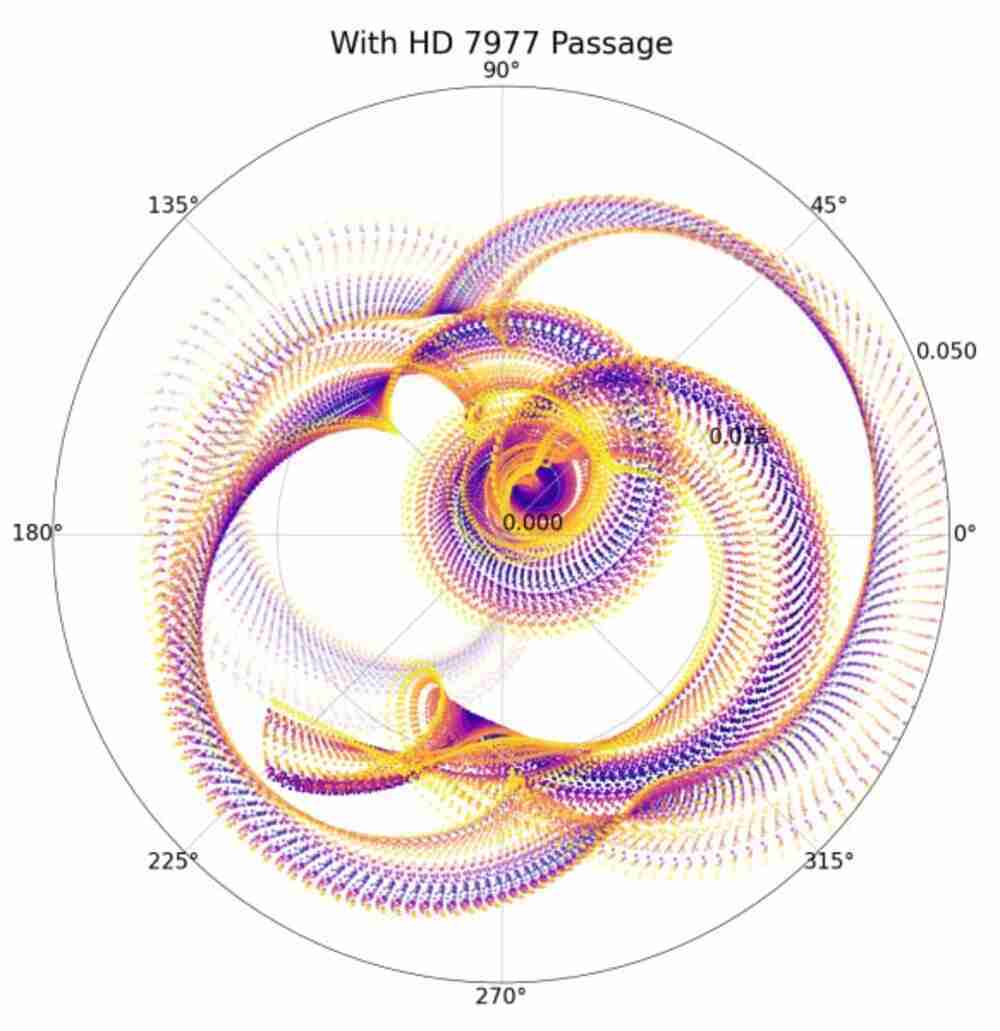EARTH SCIENCES
Unveiling the mysteries of Earth's orbital evolution: Supercomputer simulations lead the way

Today, we delve into the captivating world of celestial mechanics, where supercomputer simulations have astoundingly unraveled the ancient secrets of Earth's orbital evolution. These cutting-edge simulations, conducted by scientists at the Planetary Science Institute (PSI), have shed new light on the profound impact of passing stars on our planet's long-term trajectory.
Imagine a journey back in time, millions of years ago, when Earth, embraced by the mysteries of the universe, encountered the gravitational disturbances of neighboring celestial bodies. It is precisely the ingenuity of scientists such as Nathan A. Kaib, lead author of the awe-inspiring research published in the Astrophysical Journal Letters, that has allowed us to envision this extraordinary voyage.
For centuries, the geologic record has provided tantalizing clues about the intimate connection between Earth's orbital eccentricity and the fluctuations in our climate. Yet, until now, the true extent of this influence has remained shrouded in ambiguity. Through the power of supercomputer simulations, the PSI team has now paved a path to unraveling these enigmatic relationships.
These simulations, akin to the meteorological forecasts we are all familiar with, extend our understanding of Earth's past orbital evolution. However, what sets the PSI's work apart is their inclusion of an often-overlooked factor - the passage of stars close to our Solar System. As the Sun and other stars gracefully dance around the center of our Milky Way galaxy, they occasionally cross paths, enchantingly altering the trajectories of planets within their celestial embrace.
The influence of these passing stars on Earth's orbital eccentricity is remarkable. By examining the historical effects of these stellar encounters, the simulations have revealed a spectrum of potential orbital behaviors for our planet that was previously unimagined. These discoveries challenge the certainties we once held and compel us to reflect on moments in Earth's history when our understanding of its orbit may have been incomplete.
Kaib passionately emphasizes the significance of these findings, particularly in light of distinct climatic events of the past. One such phenomenon, the Paleocene-Eocene Thermal Maximum, witnessed a monumental rise in Earth's temperature some 56 million years ago. Until now, it was proposed that Earth's orbital eccentricity was notably high during this time. However, with the inclusion of passing stars in the simulations, the PSI team reveals a tapestry of possibilities, expanding the range of Earth's orbital evolution during that era.
While uncertainties naturally grow when simulating the distant past, the introduction of passing stars further amplifies these intricacies. Thus, the boundaries beyond which our predictions become unreliable have shifted, unveiling a rich tapestry of orbital behavior previously untapped by conventional models.
Perhaps most thrillingly, Kaib and his team have identified a specific stellar encounter that occurred 2.8 million years ago, involving the Sun-like star HD 7977. The potential impact of this fascinating event on Earth's orbit, though contingent upon accurate measurements of the closest encounter distance, is profound. It beckons us to reconsider our preconceived notions of Earth's celestial dance and to explore the exciting possibilities that lie within our cosmic history.
As we marvel at the magnitude of the discoveries made possible by supercomputers and the visionary minds of scientists, we are reminded of the boundless wonders waiting to be unveiled. Our quest to understand Earth's past and its intricate relationship with passing stars propels us toward a future where the mysteries of our universe continue to inspire, enlighten, and reshape our perception of the cosmos.

